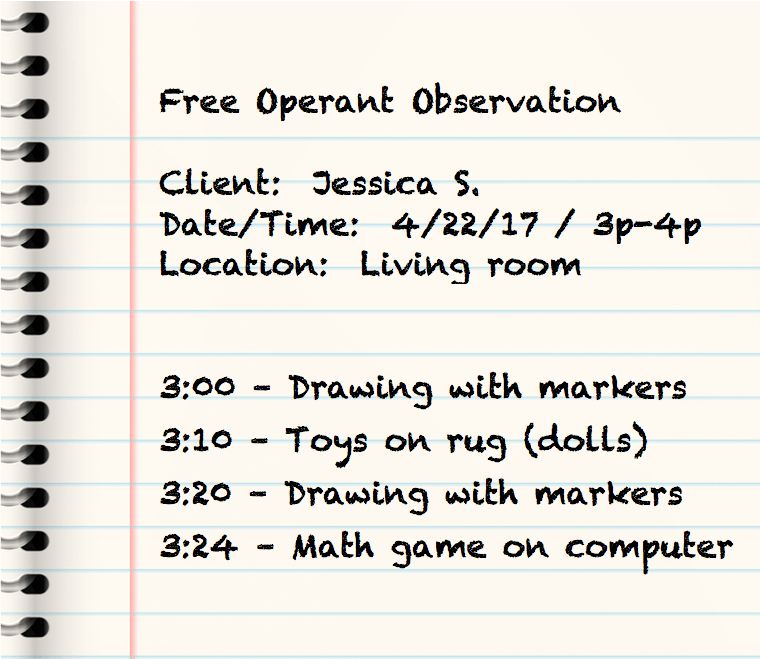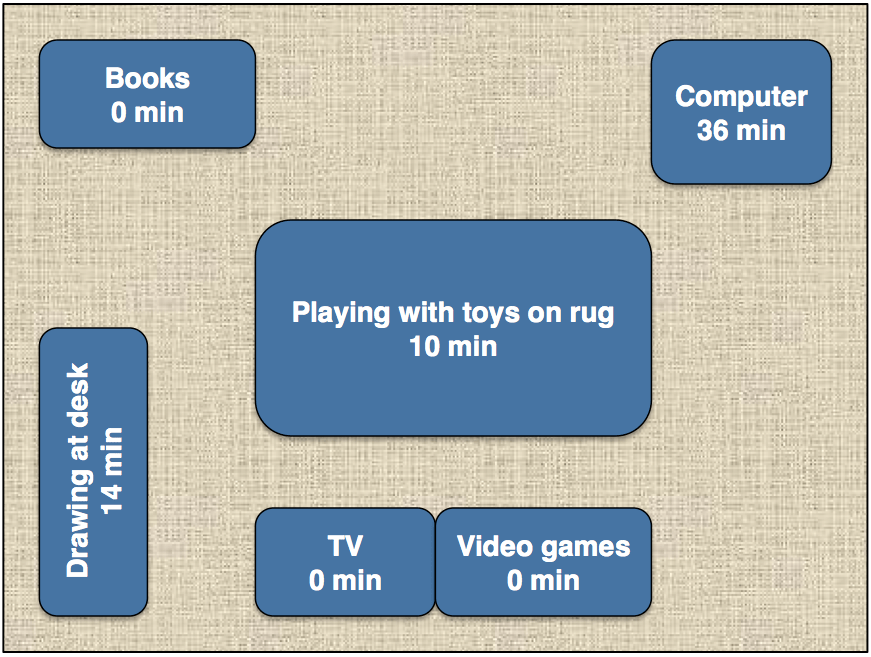What does the client do?
Free operant observations refers to noticing the activities the client engages in when there is free access to all items and activities. Consider the term free time:
What do you do when you get home from work and there is nothing that you must do?
Now consider a client having “downtime” in an environment where there are many preferred items and activities, such as the bedroom or living area of the house. Free operant observation records the amount of time a client engages in a particular activity, then compares it to the amount of time engaged in other activities.
The assumption of free operant observation method is that the more time a client spends on a particular activity indicates more preference for that activity. For example, if the client spent 40 minutes watching TV and 30 minutes reading, then watching TV would be considered more highly preferred than reading.

Contrived Free Operant Obsevation
Contrived is a term often used in behavior analysis to refer to situations that are pre-arranged for a particular purpose. Here, it refers to observing the client in an environment that was set-up with the client’s favorite items and activities.
Below Jessica’s RBT observed Jessica for an hour among her most preferred items and activities: playing on the computer, looking at books, playing with toys, drawing, watching television, and playing video games. Jessica had access to all these activities and items in a central location. Below is a map of the living room where she played. The notes are the RBT’s observation of Jessica during the hour assessment.


Based on the notes from Jessica’s RBT, Jessica’s preferred items and activities were computer, drawing and playing with dolls. They may be put in order by preference, with the most preferred activity being the one that received the most amount of time during the assessment period.
Jessica’s Preferences in Order
- Playing math game on computer (36 minutes)
- Drawing with markers (14 minutes)
- Playing with dolls (10 minutes)
Naturalistic Free Operant Observation
The RBT spends more time with the client than anyone else on the treatment team. There may be situations during which free operant observation data may be collected in the natural environment. For example, observing the client during free time at school or even in unexpected situations, such as the doctor’s office waiting area. When deciding whether a situation is an ideal opportunity to record time spent with each activity, consider the following guidelines.
Free Operant Preference Assessment Guidelines
- Items/activities will not be taken away from the client (for instance, being asked to share)
- All items are accessible to client (within sight and reach)
- There are no demands / required responses (hands-off situation)

